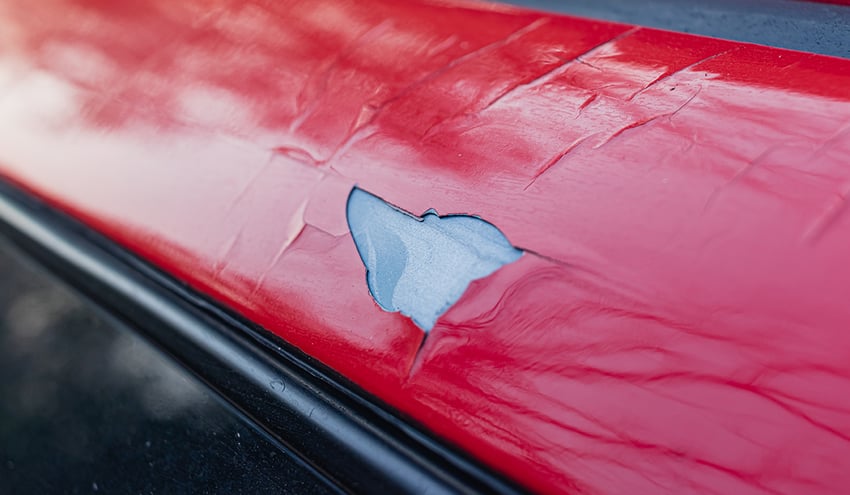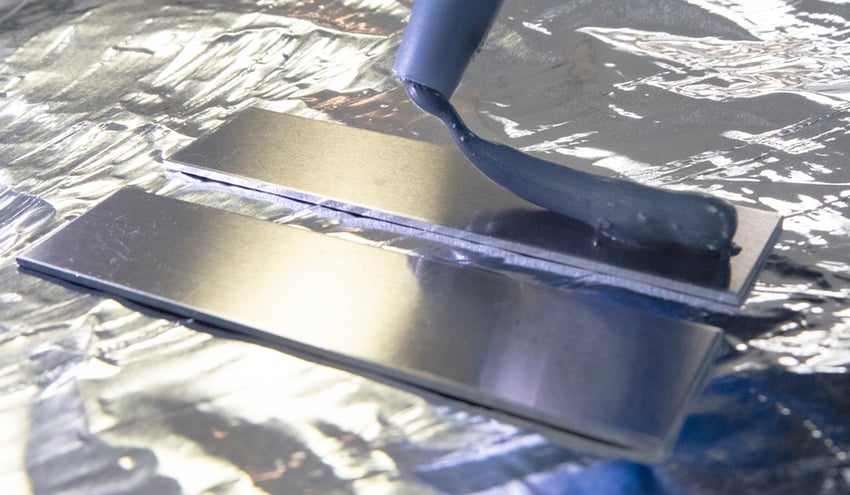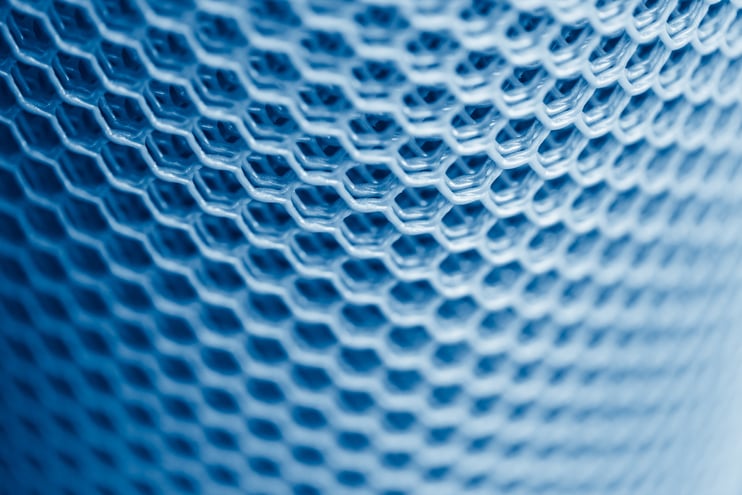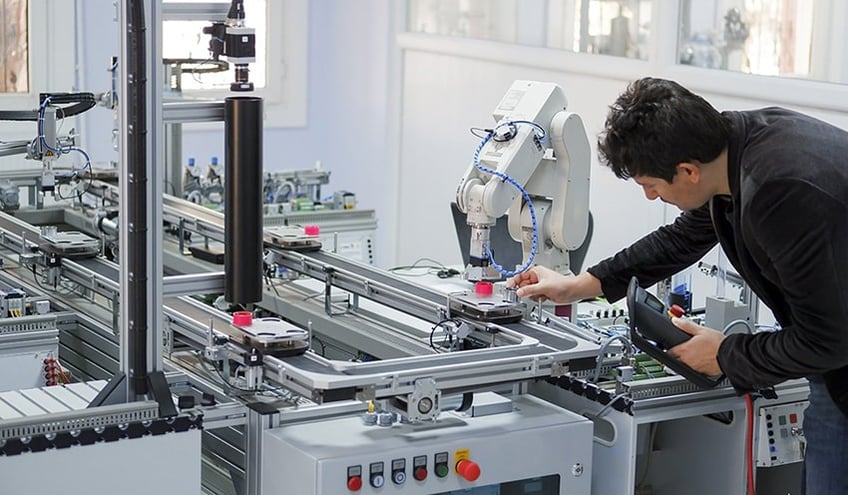Some manufacturers go to extraordinary lengths to eliminate the presence of silicone in their manufacturing facilities. Some manufacturers invest significant resources in cleaning procedures to eradicate any silicone contamination. These approaches can be revolutionized by the development of a dependable method for detecting silicone during the production process.
The problem with silicone is that it obstructs bond formation, which leads to adhesive bonding failures like paint defects such as fisheye, which look unsightly and can let corrosion set in.
If silicone were easy to see, there wouldn’t be so much concern, but it’s invisible and can be introduced to surfaces in many unexpected ways. That’s why some manufacturers regulate the use of silicone-containing materials and products in their plants. A complementary detection method of silicone contamination is through water contact angle measurement.
Understanding the Nature of Silicone
Silicone, a versatile material, possesses the unique capability to be an ally in manufacturing (mold releases) or a hindrance to adhesion processes. In the organization, two distinct groups are interested in its material properties. The team responsible for manufacturing parts using molds applies silicone as a release agent on the tools to enable flawless extraction from the mold. This silicone application prevents adhesion, allowing the part to be removed from the mold without sticking. Conversely, the end user, who needs to coat, adhere, or paint the part, requires the material to be free of surface contamination to ensure optimal bond strength. For the creators of the original material part, silicone is indispensable. However, those assembling the material later in the product lifecycle will encounter adhesive failure if silicone residue remains on the surface. Therefore, test methods such as detecting and quantifying silicone presence are crucial to avoid complications in subsequent manufacturing processes.
As companies think about developing methods, they need to understand where silicone stops being a benefit and becomes a detriment, and so we define that as a Critical Control Point.
Sources of Silicone Contamination
Silicone enters manufacturing plants in many ways, both through human handling and materials used in production. It is present in cosmetics and skincare products, leading to its presence on employees' hands when they arrive at work.
Additionally, industrial lubricants often contain silicone, and it is a key ingredient in mold release agents used in polymer and composite molding operations. Certain epoxies are also silicone-based and are employed in specific pressure-sensitive adhesives. Moreover, silicone is utilized in products like watchbands, rings, and waterproofing sprays for outerwear, making it difficult to prevent its introduction into a facility.
Other considerations are the materials and machinery brought into a plant. Unless suppliers take strict precautions, they can be contaminated with silicone. As it transfers readily to other surfaces, that can be another source of paint and bond problems. Common sources include:
Human Handling
- Cosmetics (makeup, hair products, hand lotion)
- Wearable accessories (apple watch band, rings)
- Waterproofing - Individuals who spend significant time outdoors or engage in hunting activities often apply waterproofing agents containing silicone to their clothing.
- Protective gloves
Materials Used in Production
- Lubricants, greases, and other process aids control silicone.
- Silicone-containing mold release agents
- Tape, masking tapes
- Silicone-based adhesives
- Packaging materials
- The mobility of silicone varies, with some types being highly mobile and capable of airborne travel.
Silicone Removal and Avoidance Best Practices
Manufacturers have two options for dealing with silicone contamination: clean surfaces thoroughly immediately before the adhesive or paint application or exclude all possible sources of contamination from the production area.
Cleaning methods are chemical solvents, plasma/corona/flame treatment, and mechanical removal. The challenge lies in effectively eliminating silicone, as it requires time and financial resources. This is crucial for safeguarding profits and maintaining high-quality standards.
Cleaning agents and chemical solvents might not completely eliminate silicone and could potentially spread it to other surfaces. Harsh cleaning agents present potential health, safety, and environmental risks. Additionally, plasma or flame treatments could activate the silicone, leading to further chemical reactions that potentially worsen the issue. Brushing or bead blasting can spread the contamination further and may not reach every part of a contoured surface uniformly.
Finally, it should again be noted that it’s difficult to know if all the silicone has been removed or how much remains.
Given the limited effectiveness of removal methods, some manufacturers have implemented rigorous protocols to keep silicone away from their production areas. This includes practices such as banning the use of hand cream, eliminating silicone-containing lubricants, and building separate areas within the plant that are silicone-free—all of which are expensive and time-consuming to manage.
Silicone contamination has been a significant concern for aerospace manufacturers and critical bond shops for years. Recently, automotive companies have realized the need to manage silicone similar to the aerospace industry and implement control measures to prevent contaminated surfaces.
This push from large automotive companies is impacting a huge amount of companies and people. For example, some have adopted standards for “paint wetting impairment substances” (LABS) that dictate the actions required to avoid silicone contamination throughout their suppliers, sometimes two levels down from the actual vehicle manufacturer.
Detecting Silicone Contamination
It takes sophisticated analytical equipment to detect silicone. The most successful technologies in automotive OEMs are Fourier transform spectroscopy (FTIR) and x-ray photoelectron spectroscopy (XPS), both of which are performed in a laboratory.
Such laboratory testing can yield accurate results, but it is usually only performed on a sample basis. In addition, there’s a risk of the swab with which the workpiece was wiped becoming contaminated on its way to the lab. Furthermore, being indirect, the results don’t reveal how much silicone is present, and they take time to come back, which can delay production and result in more contamination.
Critical surfaces are within the factory. Results may take hours or even days to obtain when employing a sample extraction method. All the challenges arise at the stage in the factory where the materials are being readied.
Over the past decade, a new method has emerged. This method is to measure water contact angle on the surface of the actual substrate material. This provides a direct measure of surface energy and, hence, a reliable indication of the extent to which silicon contamination is present.
Water contact angle can be measured both on a sample basis with handheld equipment or through automated control. Both approaches yield data enabling traceability and trend monitoring.
Implement Critical Control Points for Silicone Contamination
Once a surface is contaminated with silicone, returning it to a clean condition is extremely difficult. However, the preventive measures businesses put in place make it harder for people to perform their jobs. This friction adds cost and creates delays that can cause more problems.
The alternative is to implement checks for contamination at appropriate points in the production process. These critical control points are places where it’s possible to trace back to the source of the contamination and institute appropriate preventive measures.
These control points have another benefit, too. They build confidence in the bonding and coating processes because it’s clear when the material surfaces are ready.
Water contact angle measurement provides a way to create these critical control points. It builds confidence in process quality, the increased knowledge about surface readiness increases flexibility, and for plant managers, it opens new dimensions of productivity improvement.
Learn how implementing a silicone detection protocol can detect environmental changes and warn when problems are likely present and when action is needed.
First, the ability to meet PWIS standards provides the opportunity to go after businesses where the customer requires such performance levels. Second, it makes it possible to demonstrate to customers concerned about silicone contamination that the business has implemented reliable control measures. Third, it provides a common language for production, quality, the supply chain, and engineering teams, enabling constructive discussions rather than adversarial finger-pointing.
For many manufacturers, water contact angle measurement is an as-yet untapped opportunity. Whether silicone contamination is a problem or not, it provides surface intelligence that unlocks higher quality and productivity.
Learn how your company can proactively address the risks associated with silicone contamination throughout your product lifecycle by accessing the eBook “The Advanced Guide to Transforming Product Development Through Surface Intelligence Data & Technology.”

















